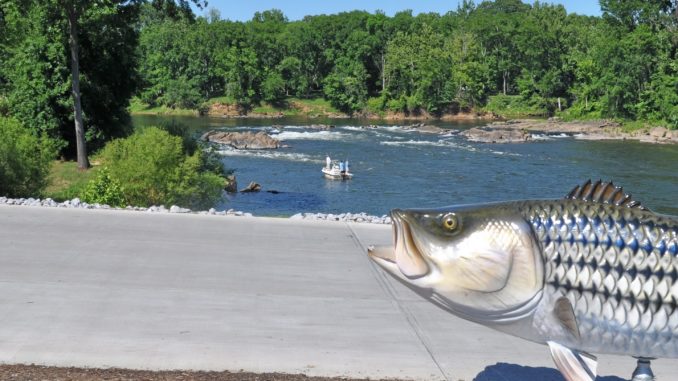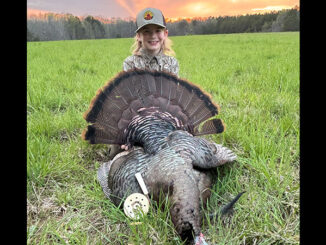
It may be late in the season for striped bass spawning runs at the Roanoke River near Weldon, but anglers continue to have tremendous catch-and-release days.
Some erstwhile saltwater guides remain in the area to offer uninitiated “rockfish” chasers a boat and the knowledge to avoid the river’s large stone impediments and make a trip productive, safe and less expensive (lower units add up after a while).
One such guide is Richard Andrews of Washington, N.C.
“I’ve been up here since April 1, making a few weekend trips back home to see my family,” said Andrews (Tar-Pam Guide Service, 252-945-9715, http://www.tarpamguide.com/).
He’s been putting clients on 30- to 80-fish days — landing and releasing that many rockfish without having to search up and down the clear-flowing river. Keeper season began in mid March but ended April 30.
“I’ve been having a lot of success in the rocks just left of the Weldon boat ramp,” he said.
The Wildlife Commission ramp and surrounding area have been improved greatly, with a pier to help load and off-load anglers and tackles, and boaters often tie to the pier for a respite or take a shoreline break. The parking lot is completely paved now with designated parking spots, and the Weldon WRC boat ramp contains three wide trailering strips instead of two.
“But there’s still rocks (in the river), just above and below the ramp, and the water flow is low, 5,000 cfs (cubic feet per second),” Andrews said. “People need to be careful.”
Shoreline anglers often cast to stripers, although when the boats are stacked up in the rapids, it’s not a good idea.
“Evenings (3:40-7:30 p.m.) have been just great times to catch topwater stripers,” Andrews said. “Nothing to me is more fun than catchin’ stripers busting on top.”
The only complaint for fishermen right now is the rockfish are small, averaging about 3 pounds.
“We’ve caught a few larger ones, up to 27 inches, but I really think the river is just choked with 2-year-old fish; they’re up in the water column; and a lure doesn’t have much of a chance to get to bigger stripers down below,” he said. “The small ones, and there are plenty, just eat ‘em up.”
One-quarter-ounce jig heads with 3-inch soft-plastic grubs with a paddletail also are extremely effective.
“My favorite thing is to fly fish for them, but it’s kinda tough with all the lines in the water near the boat ramp,” Andrews said.
He’s been using 3-inch-long white and green Clouser flies with 250- to 350-grain sinking line and 6-weight fly rod.
“In mid-April we caught some 20- to 27-inch stripers, the females, but a lot of them now have gone back down the river,” Andrews said. “But you still can have a great time fishing up here.”
It’s also a disproven notion that all striped bass return to Albemarle Sound and the Atlantic Ocean once May arrives. A resident population remains throughout the year, and anglers catch them by drifting and casting ChugBugs and Pop-Rs underneath overhanging shoreline branches through June (largemouth bass are a bonus catch). A jet-drive boat, however, is the best idea during this time as water levels are usually even lower. A launch area near the Town of Gaston bridge is a popular put-in spot.





Be the first to comment